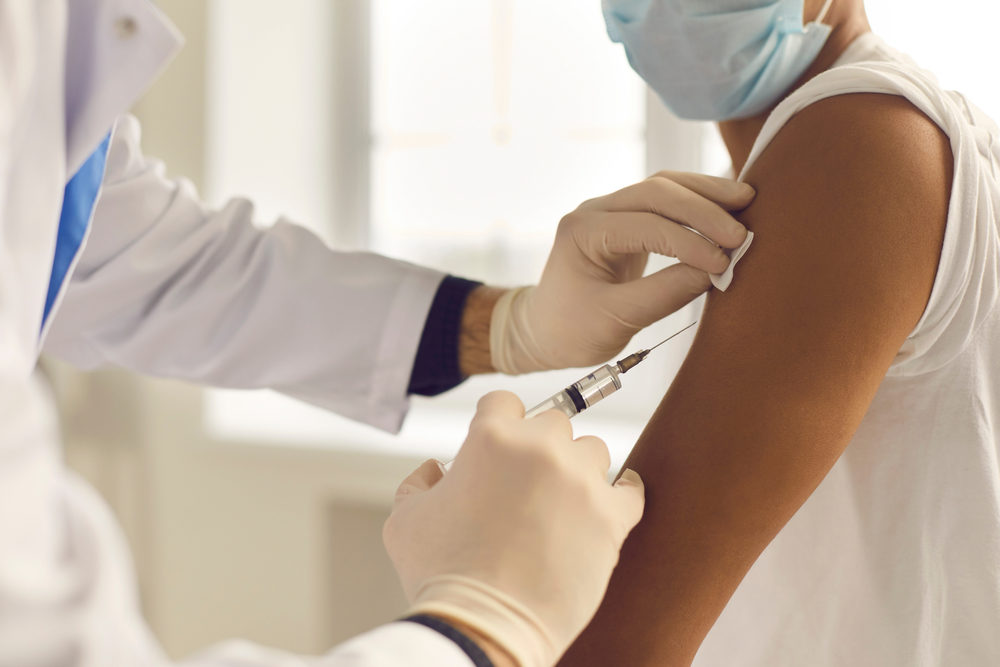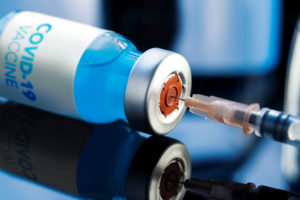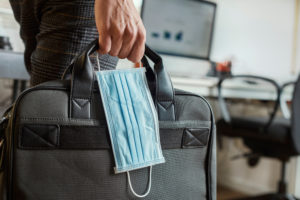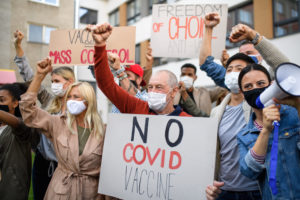
With the arrival of COVID-19 vaccines, a collective sigh of relief spread across the U.S. Pharmaceutical giants Moderna and Pfizer-BioNTech developed vaccines in less than a year, with the U.S. Food and Drug Administration (FDA) approving both vaccines for emergency use in December 2020. As additional vaccines like Johnson & Johnson’s Janssen 1-shot vaccine are available, many people are concerned about the potential side effects of an mRNA vaccine that took months to develop and manufacture versus the standard viral vector 10-15 year process.
Vaccinations have side effects. When you experience common side effects such as headache, chills, fatigue, muscle/joint pain, fever, pain, swelling, and redness in the vaccinated arm, your immune system is responding to the vaccine. Common side effects typically resolve on their own within a few days.
More serious vaccine side effects like shoulder injuries are less common. However, vaccine-related shoulder injuries can negatively impact someone’s health, wellness, and ability to earn a living. Persistent pain and limited range of motion are caused by ligaments and tendons being inflamed – often, this inflammation is caused when the vaccination is injected too high on the arm or too deep in the arm. Known as Shoulder Injury Related to Vaccine Administration (SIRVA), it is more than just a sore shoulder experienced for a few days. SIRVA could be permanent.
Before leaving office, President Trump issued a rule to remove shoulder harm and fainting from the list of injuries eligible for compensation from the National Vaccine Injury Compensation Program (VICP). The Trump administration argued that vaccines were not the cause of SIRVA but rather the placement of the vaccine needle, so compensation shouldn’t come from the VICP. The new rule would have taken effect on February 22. The Biden administration decided to pause it and asked the Department of Health and Human Services (HHS) to review VICP and specifically the list of injuries eligible for government compensation.
Injuries and bodily responses on this table have a lower burden of proof for receiving government payout because the petitioner does not have to prove a vaccine caused the injury. President Biden cited concerns that removing fainting and shoulder harm from the Vaccine Injury Table would leave those administering vaccines, like doctors’ offices and pharmacies, vulnerable to civil lawsuits. As the president continues to encourage all Americans to become vaccinated, this is another incentive to receive a vaccination. Ultimately, the decision was made to reverse the Trump-era rule.
History of Vaccination Compensation Programs
In 1986, Congress enacted legislation that created the National Vaccine Injury Compensation Program (VICP) due to lawsuits against vaccine companies. This avalanche of lawsuits threatened to drive vaccine companies out of business. This legislation created a no-fault system where if you experience an injury from a list of 16 vaccines, you can file a petition with the U.S. Court of Federal Claims. HHS experts then decide whether the government should compensate the individual or mount a defense. The defense is mounted by the Department of Justice, with a judge issuing a final decision. The government pays plaintiff attorneys upon the conclusion of the defense.
Under the Obama administration, a change was made so that those petitioning HHS no longer have to prove that an injection caused SIRVA. They only need to document a previously healthy shoulder, the administration of a vaccine in that arm, and the onset of shoulder pain within 48 hours that lasts for at least six months. It is the government’s job to prove that a vaccine did not cause the shoulder injury.
However, it’s important to note that currently, a shoulder injury caused by a fast-tracked vaccine, like the COVID-19 vaccine, is not eligible for payments through VICP. Instead, a claim would need to be made through the Countermeasures Injury Compensation Program (CICP) as the COVID-19 vaccine is a countermeasure response to the international pandemic. Upon receiving formal approvals from the FDA, COVID-19 vaccines could be added to the VICP in the future.
The CICP was established in 2011 by the Public Readiness and Emergency Preparedness Act. It covers injuries from vaccines, medications, devices, or other items recommended to diagnose, prevent or treat a declared pandemic, epidemic or security threat. COVID-19, Ebola, Zika, and anthrax are some of the covered medical countermeasures. It’s important to remember that you only have one year to file a petition with CICP for an injury you received from a countermeasure response. The CICP could cover reasonable and necessary unreimbursable medical expenses and lost employment. Death benefits may be paid in some instances. It does not cover legal fees, suffering or other damages.
Over the last ten years, 90% of vaccine-injury claims have been rejected by CICP. Compared to VICP, the VICP has paid approximately 70% of claims between 2006-2018.
Related: Are There Any Legal Options If You Suffer Side Effects From COVID-19 Vaccine
Because of the challenges in receiving compensation from an injury caused by a vaccine, speaking to an attorney to determine your legal options is the best first step. The Cochran Firm Texas is here to help. For more information about filing a vaccine injury claim, call us at 1-800-THE-FIRM (800-843-3476), contact us online or use our live chat.

At Cochran Texas, we understand that needing legal help can be scary. It doesn’t have to be. We are a trusted leader in the legal profession and in our community. We know you are more than a case number. We get to know you as a person. This allows us to offer a balanced and thoughtful approach to giving you the best possible legal representation. Our mission is to protect the legal rights of ALL people in our community. No matter your race, gender, background or income level you have a right to skilled legal help. Call us at 800-843-3476.














Comments for this article are closed.